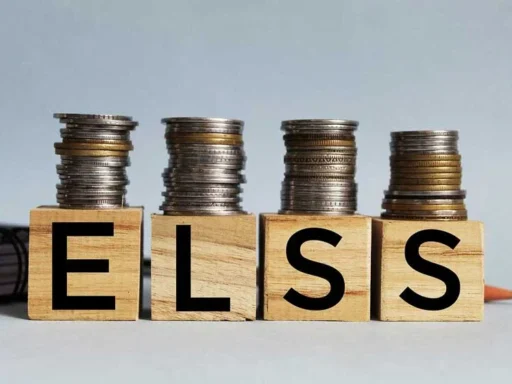In today’s world, shopping is as simple as the click of a button. From online retailers to mobile apps, buying goods and services has never been easier. With so many convenient options, it’s easy to fall into a trap where we’re spending money without fully understanding where it’s going or how much we’re truly spending. This is the “out-of-sight, out-of-mind” mentality that many of us experience—especially when we’re using mobile wallets or subscribing to services with just one click.
The good news is that with a little mindfulness, just like you would with your health, self-care, or eating habits, you can stay on top of your finances. Mindful spending doesn’t require drastic changes, just a few simple strategies to bring more awareness to your financial decisions. The goal is to build good spending habits, stay within your budget, and even prepare yourself for the future. If you’re already facing some financial struggles, is Freedom Debt Relief legit might be a question you’re asking, and it’s an important step toward handling overwhelming debt while practicing mindful spending. Let’s dive into the fundamentals of mindful spending and how you can begin to take control of your financial habits.
Recognize the Impact of Instant Gratification
One of the main reasons we fall into unmindful spending is the allure of instant gratification. We’ve all experienced that rush when we click “Buy Now” and immediately feel good about our purchase. However, this immediate satisfaction often comes at the expense of our long-term financial health. Whether it’s an impulse purchase or a subscription we forget about, spending without considering the future can lead to bigger problems down the road.
The key to mindful spending is recognizing that you don’t need everything immediately. Just as with dieting or taking care of your health, good financial habits are about discipline and patience. Instead of purchasing something right away, pause and ask yourself: “Do I really need this? Is it within my budget?” If it’s not an essential purchase, consider waiting a few days to see if the desire fades. Taking this step can help you avoid unnecessary expenses and save for more meaningful purchases in the future.
Keep Track of Your Spending
The first step to mindfulness in spending is simply becoming aware of where your money goes. It’s easy to swipe a card or tap your phone without fully considering how often you’re spending or what you’re spending on. Keeping track of your expenses is an essential part of building a mindful spending habit.
Start by reviewing your bank and credit card statements regularly. There are also plenty of apps available that can help you track your spending automatically and categorize your purchases. Whether it’s tracking how much you’re spending on coffee each week or keeping an eye on recurring subscriptions, the more aware you are of your spending habits, the easier it is to identify areas where you can cut back.
If you’re feeling overwhelmed by debt, tracking your spending is even more important. If you’re already paying off loans or credit cards, you’ll want to identify areas where you can reduce expenses. Once you have a clear understanding of where your money is going, it’s easier to adjust your habits and redirect funds toward paying off debt or saving for your future.
Create a Spending Plan
A big part of mindful spending is creating a spending plan or budget. Having a budget isn’t just about tracking how much you spend; it’s about being intentional with your money. When you set a budget, you decide in advance where your money will go, which helps prevent overspending.
Start by looking at your monthly income and breaking down your essential expenses—things like rent or mortgage, utilities, groceries, and transportation. Once you’ve accounted for these, you can determine how much you have left for non-essentials, like entertainment or dining out. Mindful spending means setting limits for these discretionary categories and sticking to them.
One helpful approach is the “50/30/20 rule” where 50% of your income goes to necessities, 30% to discretionary spending, and 20% to savings or debt repayment. This framework can help you prioritize saving for your future while still allowing room for enjoyment in the present. It’s a simple way to balance today’s pleasures with tomorrow’s financial security.
Set Clear Financial Goals
Mindful spending is all about being intentional, and setting clear financial goals can guide your decisions and help keep you on track. Having a goal in mind—whether it’s building an emergency fund, saving for a vacation, or paying off credit card debt—makes it easier to resist the temptation of impulse buys.
If you’re currently facing debt, one of your goals might be paying off your credit card balance or consolidating your loans to reduce interest rates. There are also options like debt resolution programs, which can help you create a structured repayment plan. By setting a specific goal, like “I want to pay off $1,000 of credit card debt in 6 months,” you’ll be more motivated to stay disciplined with your spending.
Having clear financial goals helps you say no to unnecessary purchases. When you see something you want, you can remind yourself that each small sacrifice today will help you reach a larger, more meaningful goal in the future.
Practice Delayed Gratification
A core principle of mindful spending is the ability to practice delayed gratification. This means resisting the impulse to buy something immediately and instead thinking about your long-term goals. Delayed gratification is a skill that helps you focus on your bigger objectives and avoid wasting money on things that won’t add long-term value to your life.
One way to practice delayed gratification is by using the “24-hour rule.” If you see something you want to buy, wait 24 hours before making the purchase. During that time, think about whether the item will really make a difference in your life or if the desire is just a passing impulse. This rule gives you time to make a more thoughtful decision and helps you avoid emotional spending.
Reflect on Your Purchases
Mindful spending is not just about saying “no” to purchases—it’s also about reflecting on the things you buy. After a purchase, take a moment to reflect: “Did this purchase bring me long-term happiness, or was it just a temporary high?” This reflection helps you become more conscious of your buying habits and gives you insight into whether your purchases are aligned with your values and goals.
By taking the time to reflect on your spending, you can make better decisions in the future. Mindful spending isn’t about restricting yourself—it’s about making conscious choices that help you live within your means and align your spending with your true priorities.
Conclusion: Mindful Spending for a Healthier Financial Future
Mindful spending is about more than just budgeting—it’s about being aware of your financial habits and aligning your spending with your long-term goals. By taking the time to reflect on your purchases, setting financial goals, and creating a plan, you can build a healthier relationship with money. Whether you’re tackling debt, saving for a big purchase, or planning for the future, mindful spending gives you the tools to stay on track and make smarter financial decisions.
With a little discipline and intention, you can enjoy your financial present while preparing for your future. Mindful spending isn’t a restriction—it’s an empowerment tool that puts you in control of your finances and helps you live the life you want, without the stress of unnecessary debt or overspending.





